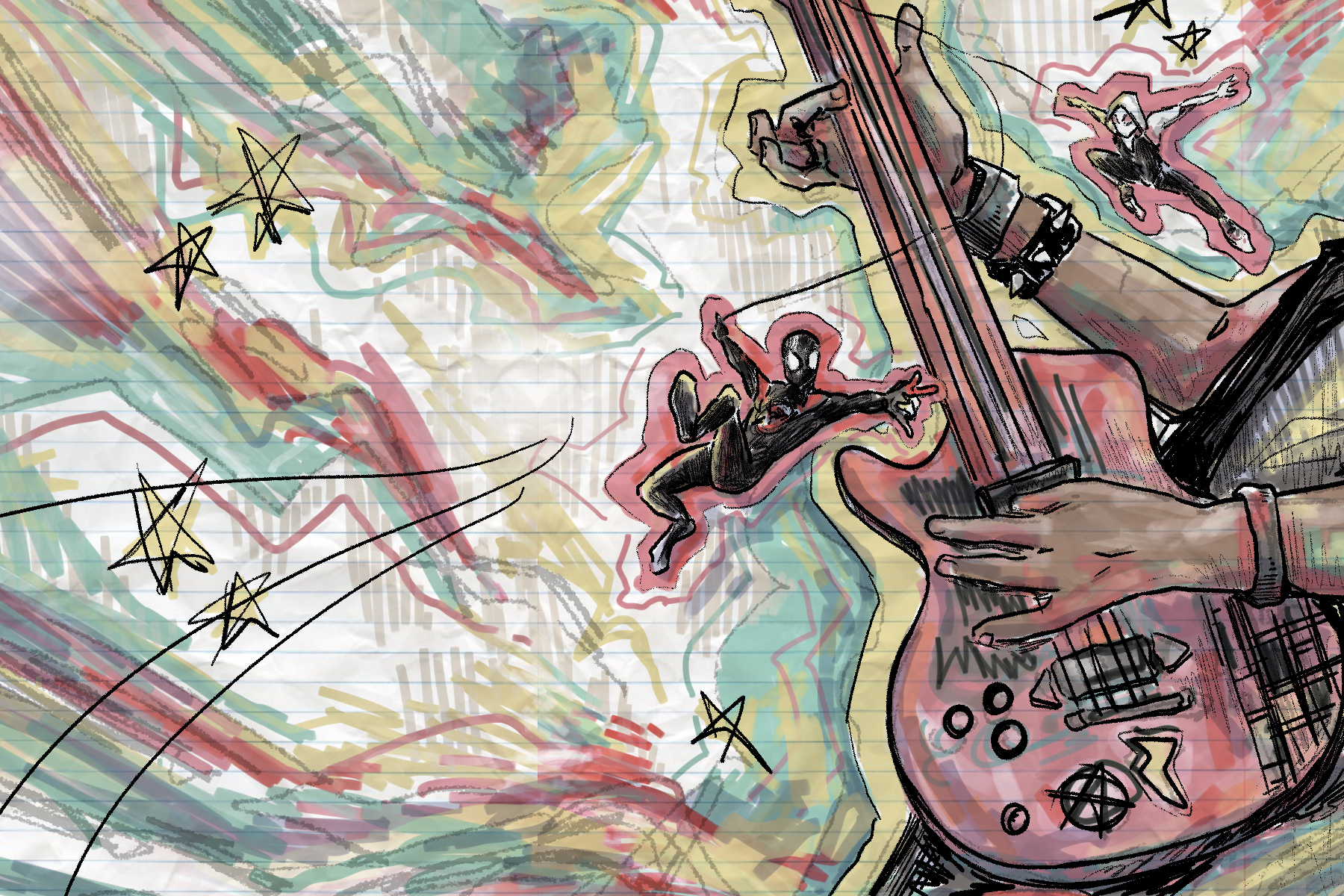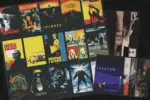By now, almost everyone has heard about the newest animated Spider-Man movie, “Spider-Man: Across the Spider-Verse.” The animated sequel is so popular that it’s giving its predecessor, “Spider-Man: Into the Spider-Verse,” a run for its money. “Across the Spider-Verse” made nearly four times as much as “Into the Spider-Verse” in box office profits during opening weekend, and is shaping up to be one of the biggest blockbusters of 2023.
Every aspect of the film, from the spectacular visuals to the captivating story, has critics calling it “some of the finest animation ever put to film.” But one aspect of the production that hasn’t been getting nearly as much credit as it’s due is the film’s score.
For those unaware, a movie score consists of the music underlying the various scenes. It sets the tone, provides characterization and performs many other storytelling tasks in the background of every shot. It’s different from the soundtrack, a more general term that usually applies to recorded music included in the film, like “What’s Up Danger” by Blackway and Black Caviar, or “Sunflower” by Post Malone and Swae Lee, both of which were featured in the first Spider-Verse movie.
But the term can also refer to any sound included in the movie, from background noise to foley. The score is a specific part of the soundtrack, carefully crafted to accompany each scene and punctuate what’s happening onscreen (it just so happens that pretty much every piece of music in “Across the Spider-Verse” was written specifically for the film, including the recorded songs, but that’s more of an exception than the rule). The score is crucial for the creation of a movie, yet many members of the general audience will never know what the term refers to.
You may have heard clips of the movie’s background score online, such as the infamous Prowler theme which returns from the first film, or the energetic music accompanying Pavitr Prabhakar as he enters the movie in the Mumbattan scene, but the movie’s track is stacked with captivating musical moments.
Take Gwen Stacey’s theme for instance, which is one of the first songs in the movie’s opening. It accompanies the audience’s first look at Gwen’s world; the “dreamy watercolors” that make up her version of NYC match perfectly with the synth-indie sound that plays as she swings through it. Daniel Pemberton, the film’s composer, explained he wanted a “floaty synth sound … to capture [Gwen’s] grace and balletic qualities.”
This piece of the score stands out in particular for a certain echoey string sound that first plays when Gwen starts swinging in her superhero costume. It’s energetic and demands your attention, instantly becoming recognizable with her character and setting the tone for the rest of the scene.
Conversely, Gwen’s fight with Vulture later on features an operatic singing voice haunting the background of the score along with that string sound from her theme, creating tension and drawing a contrast between Vulture’s Renaissance-era world and Gwen’s more modern one. Pemberton constantly makes use of sounds in the film that the audience doesn’t expect, grabbing people’s ears and spiking the energy of the moment. His creativity with the noises he includes makes the Spider-Verse movies stand out as examples of how a score isn’t just background noise: it’s a chance to express ingenuity and enhance the film as a whole.
But more than that, parts of the score connect the plot together through repetition and contrast. Pemberton said “there are so many different noises, themes, sounds that are all interlinked … there’s rhythms that are interlinked with rhythms elsewhere. There’s melodic ideas that represent characters, represent story beats, represent concepts within the film.”
Songs that repeat in different places, such as Miles Morales’s theme, connect the minds of the audience members to certain characters. When the audience hears those sounds, they understand that the character associated with them is about to take action.
Songs can also connect to different thematic and plot elements. When the Spot’s theme gets louder and more high-pitched, it conveys that his power is growing.
One key moment toward the end of the movie perfectly encapsulates the storytelling ability the film’s score possesses: the meeting of two different versions of Miles Morales. One’s path has led him to become Spider-Man, while the other’s path has led him to turn to crime and take on his uncle’s mantle as the Prowler. It’s the big twist of the movie; the audience sees who Miles would have become if he wasn’t Spider-Man, and the score punctuates the moment by combining Miles’s theme with the Prowler’s theme from the first film. It’s dramatic, especially when the horrifying sound of an elephant trumpeting comes in from Prowler’s theme, illustrating the tension and similarities between Miles and this alternative version of himself. The score is not just present in the background: it brings the scene to life and elevates the moment to a level beyond anything conveyed through dialogue or imagery alone.
The underappreciation of scores is nothing new, as this essential aspect of moviemaking has been overlooked for years. Think back on the movies and TV shows you love. You can probably name some of the actors in them, or even the directors, but composers are less often renowned for their work. Ramin Djawadi scored all eight seasons of “Game of Thrones” to great effect. Michael Giacchino scored all six seasons of “Lost” and gave the series an iconic, standout sound, yet neither Djawadi nor Giacchino are recognized as much outside of their industry as their coworkers.
It does seem like film scores are getting slightly more credit now than they have in the past. Pemberton has received a good amount of praise for his work on the Spider-Verse films. And with “Spider-Man: Across the Spider-Verse” out now, many fans are revisiting the original movie and noticing how the music in the sequel’s score builds on that of the first film.
The Spider-Verse films draw attention to the creative possibilities a score presents and the importance of having a good one. The new movie’s success and the way in which certain sounds from it are blowing up act as proof that more people are beginning to recognize the effort put into this aspect of filmmaking. Moving forward, the hope is that composers will continue to use their talents to fill films with iconic, ear-catching sounds that elevate movies to another level.
The score and complete soundtrack for “Spider-Man: Across the Spier-Verse” and “Spider-Man: Into the Spider-Verse” are both available on Spotify and Apple Music. And if you haven’t seen the movie yet, keep an ear open for interesting sounds: they carry more meaning than many give them credit for.
















